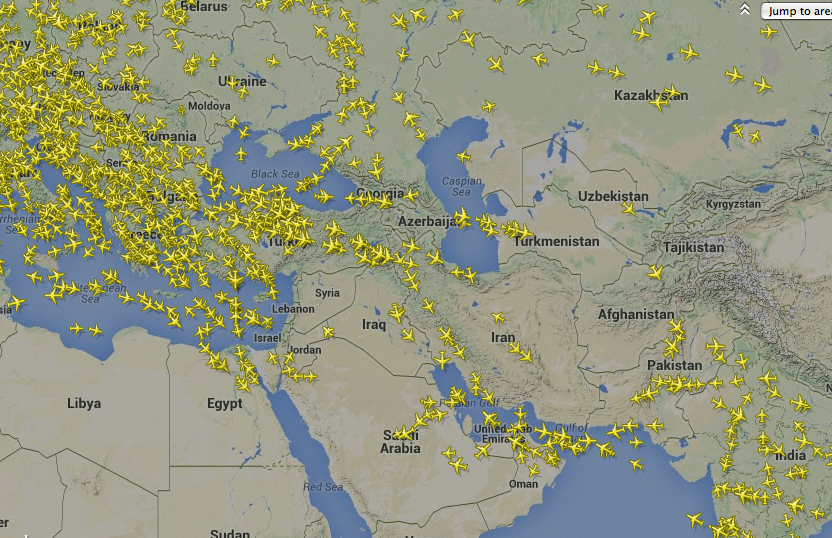August 08, 2014

Iran is eagerly encouraging airlines fearful of flying over Iraq to send their planes over Iran, as last month it similarly encouraged planes avoiding Ukraine to use Iranian airspace.
The Islamic Republic sees this as an easy way to get some more foreign exchange.
Commercial aircraft routinely fly above 30,000 feet and fly over conflict zones without fear of artillery and or even shoulder-fired anti-aircraft missiles that rarely reach 6,000 feet. But a large Russian-made anti-aircraft missile intended for high-flying aircraft brought down the Malaysian jet flying at 33,000 feet. The concern about Iraq came when the United States said it was investigating reports that the Islamic State had captured missiles in Syria able to hit targets above 30,000 feet.
“Any plane moving across Iranian airspace should pay for each hour for monitoring and radar equipment,” Ali-Reza Bahirai, an Iranian aviation specialist, told the Fars news agency. “It will be more profitable when there are more flights.”
He didn’t say what Iran charges. In the United States, the Federal Aviation Administration (FAA) charges foreign airlines flying over but not landing in the United States $49.95 for each 100 nautical miles that it is in US airspace.
More overflights, however, won’t produce much more income. The Tasnim website said it could mean an additional $50 million in foreign exchange for Iran if the shift to Iranian airspace lasted a full year.
Ebrahim Shustari, the deputy chief of the Iran Airports Co., said Iranian airspace can handle more than 750 overflights each day but that the number was only 475 or two-thirds of capacity before the Malaysian jet was shot down over the Ukraine in June.
As of last Tuesday, he said, overflights were up a third to 631, with lots of excess capacity still left.
The main change is expected to come with Emirates Airlines decision to abandon Iraqi airspace for Iranian airspace for its many flights to Europe. Shustari said Emirates’ flights over Iran would rise from 60 daily to 130.
Qantas (with two flights a day over Iraq), Air France, Delta, United and Virgin Atlantic have all decided to avoid Iraq, but British Airways, Qatar Airways, Turkish Airways and Etihad Airways said they will continue to use Iraq. Lufthansa said it saw “no danger” in overflying Iraq but would divert its flights as a “precautionary measure” while it examines threat possibilities. But none of these airlines have the large numbers of flights that Emirates flies in the region.
International sanctions do not interfere with Iran collecting overflight payments. US airlines cannot land in Iran, but they are allowed to fly over it and to make payments to Iran for overflights.
Qantas said the diversion from Iraq to Iran would add 10 minutes to its London-Dubai flight time.























